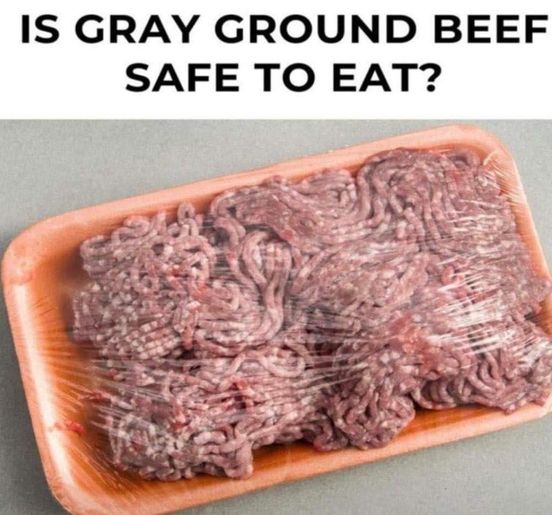Ground beef is a common ingredient in many dishes, loved for its versatility and taste. Whether you’re making tacos, lasagna, meatballs, meatloaf, or hundreds of other delicious meals, ground beef is the principal ingredient. However, it can sometimes be confusing and concerning when ground meat appears to be gray in color. Let’s explore the different colors that ground beef can be what they mean, why ground beef might be gray, and how to determine if ground meat is spoiled.
Why is Ground Beef Gray?
We’ve all been there. You pull the ground beef out of the fridge that you’re planning on using for dinner that night. Only as you’re inspecting it, there’s something about it that doesn’t seem quite right. The color, which is usually more red than anything else, is surprisingly… gray. Now you’re stuck, unsure if you can use this meat or if you have to come up with a whole new dinner plan.
There are a few reasons why ground beef can appear gray. Firstly, when meat is exposed to air, it undergoes a process called oxidation. This causes the surface of the ground beef to turn gray. Additionally, certain preservatives, such as sulfur dioxide or sodium nitrite, can give ground beef a grayish color. Finally, if ground beef is stored for an extended period, it can undergo bacterial growth, leading to discoloration. Your job is to figure out which of these is the cause of your gray beef problem. (1)
What Color is Ground Beef Normally?
Fresh ground beef is typically bright to dark red in color. This vibrant hue is due to the presence of myoglobin, a protein responsible for the red color in meat. Properly stored ground beef should maintain its red color until it reaches its expiration date.
Other Colors and Their Meanings
Apart from red and gray, ground beef can exhibit other colors, as well. This indicates different characteristics and potential problems (2, 3):
- Brown: As ground beef ages, it can gradually turn brown. This color change is caused by the oxidation process mentioned earlier. While brown meat is safe to consume, it signifies that the meat is approaching its expiration date.
- Green: If ground beef develops a greenish tint, it is a strong indication of spoilage. Consuming green ground meat can lead to foodborne illnesses.
- Black: Ground beef that is black in color is likely overcooked or burnt. However, if the black color appears on isolated parts of the meat, it might be a sign of mold contamination. In such cases, it is best to discard the affected meat.
How to Determine If Ground Meat Is Spoiled?
It is crucial to be able to identify if ground meat has gone bad before consuming it. If the meat is gone off, you’ll likely know immediately. If it’s only just started to spoil, however, it can be a little bit more difficult. Here are some signs that indicate spoilage (4):
-
- Odor: Spoiled ground meat often emits an unpleasant, rotten smell. If the meat has an off-putting odor, it is best to discard it.
- Texture: Fresh ground beef should have a moist yet firm texture. When it begins to spoil, the meat becomes slimy or sticky. These changes in texture indicate bacterial growth and should be a warning sign.
- Expiration Date: Always check the expiration date on the packaging. Ground beef should be consumed before this date to ensure safety and quality.
- Visual Indicators: Apart from color changes discussed earlier, look out for any signs of mold growth or visible signs of decomposition, such as excessive liquid or visible tissue breakdown. These are clear indications that the ground meat is spoiled and should not be consumed.
The Bottom Line
Grey ground beef is generally safe to eat as long as it has been properly stored and does not exhibit any signs of spoilage. However, if the ground meat turns green, smells rotten, or has an unusual texture, it should be discarded. It is always essential to follow food safety guidelines, including proper storage, handling, and timely consumption of ground meat. By following these precautions, you can ensure that your ground beef remains safe, flavorful, and enjoyable to eat. Finally, the general rule of thumb for any food item is: When in doubt, throw it out. Not wasting food is not worth endangering the health of you or your family over.
